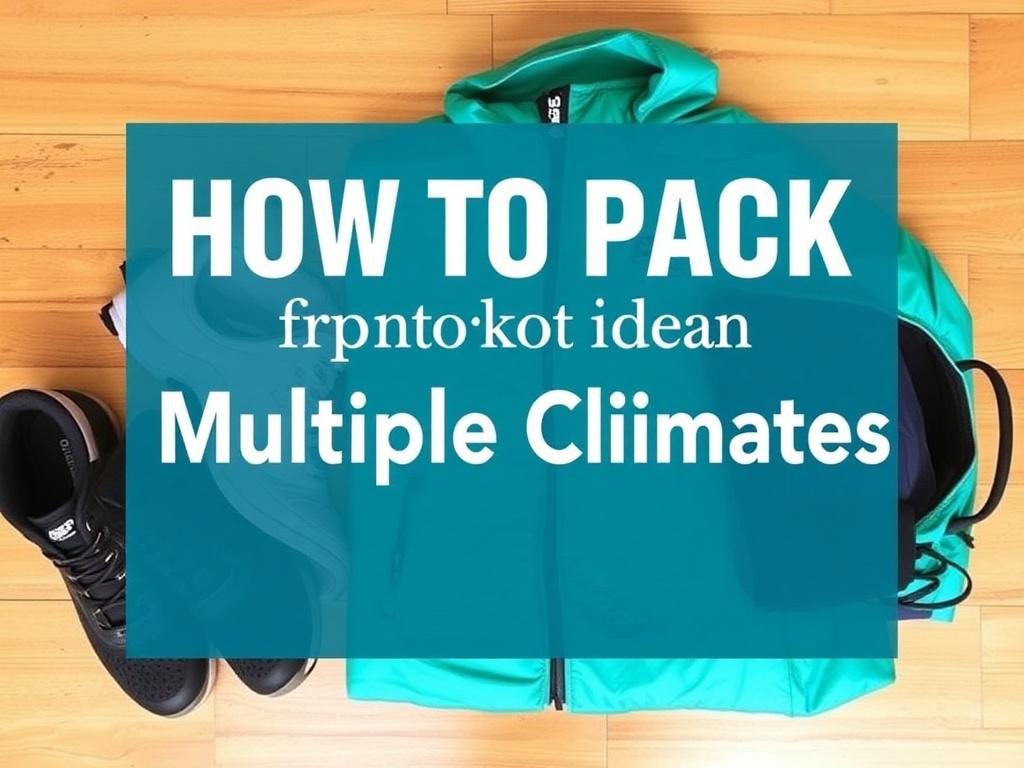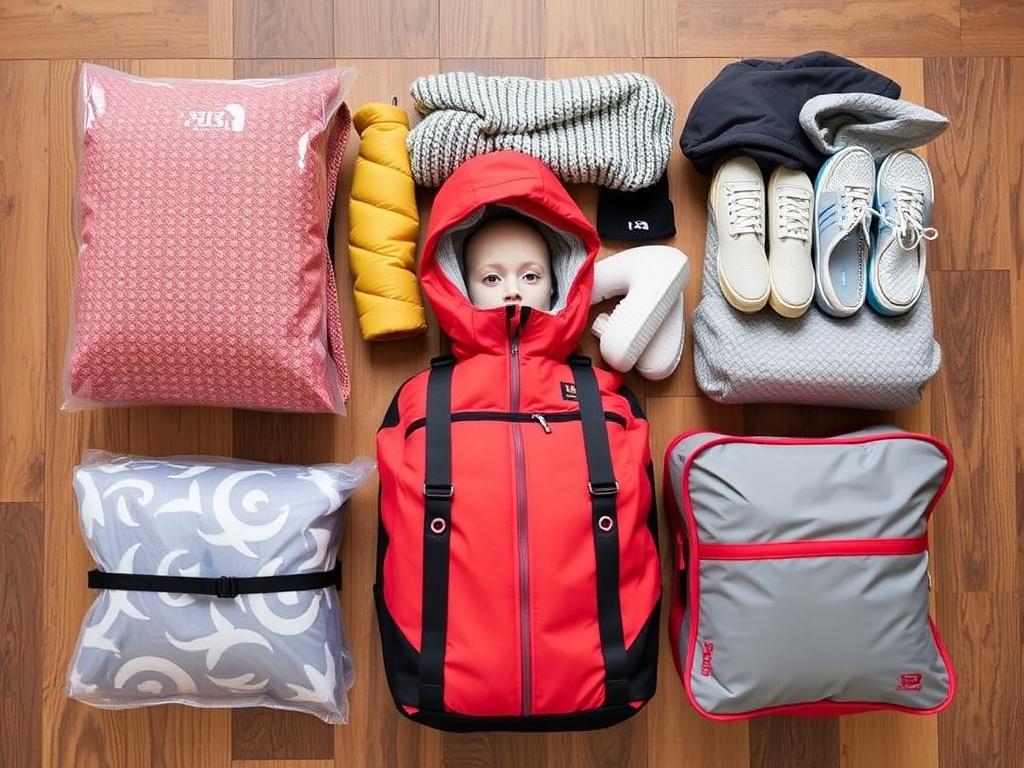Traveling to destinations with varied climates can be an exciting challenge. Whether you’re taking a trip that moves from tropical beaches to chilly mountain peaks or from humid cities to dry deserts, packing for multiple climates requires careful planning and smart strategy. The key is to pack light yet versatile, balancing comfort, functionality, and style all in one suitcase. In this article, we’ll explore expert tips and practical advice on how to pack effectively for multiple climates, ensuring your trip is worry-free and enjoyable no matter the weather.
Understanding the Challenges of Packing for Multiple Climates
When preparing for a trip that spans different weather conditions, many travelers find themselves juggling contradictory needs. For example, packing a thick jacket and bulky sweaters for cold weather alongside breathable fabrics for warm climates can quickly lead to an overstuffed bag. The dilemma often boils down to finding the perfect combination of clothing and accessories that serve multiple purposes yet take up minimal space.
Packing for multiple climates also demands an understanding of how fabrics behave and how layering can be your best friend. Knowing what to expect from the weather—humidity, temperature fluctuations, and the likelihood of rain or snow—helps you choose your travel wardrobe wisely. Additionally, packing for different climates means anticipating what activities you’ll be doing, from hiking and sightseeing to dining out or attending formal events.
Start with Smart Clothing Choices
Choosing the right clothes is the foundation of packing for multiple climates. Look for fabrics that are lightweight, quick-drying, and breathable but also provide warmth when layered. Wool, merino wool in particular, is an excellent companion for this because it regulates temperature, resists odors, and can wick moisture. Synthetic blends and performance fabrics are also handy for active travelers.
Layering Is Key
Layering allows you to adapt easily to changing temperatures. Base layers like thermal tops or moisture-wicking t-shirts keep you comfortable next to your skin. Mid-layers such as fleece or light sweaters provide insulation without bulk. Outer layers—think windbreakers, rain jackets, or packable down coats—shield you from harsh weather like wind and rain. Being able to add or remove layers means you can stay comfortable in a hot climate and then bundle up when temperatures drop.
- Base layers: quick-dry t-shirts, long-sleeve moisture-wicking tops
- Mid layers: fleece sweaters, light pullovers
- Outer layers: waterproof jackets, packable down vests or coats
Packing Versatile Footwear

Footwear is another crucial component when packing for multiple climates. Your shoes need to fit both the activities and weather conditions you’ll face. For example, a pair of waterproof hiking shoes can work well in cooler climates with rain or snow, but may be too heavy and warm for hot weather.
Choosing the Right Shoes
Aim for a balance between comfort, durability, and versatility.
- Lightweight hiking shoes or trail runners: Ideal for outdoor activities and cooler climates.
- Breathable sneakers or walking shoes: Perfect for warmer temperatures and city tours.
- Sandals or flip-flops: Great for beach or tropical climates but usually not suitable for travel days or cold weather.
A smart approach is to limit yourself to two or three pairs of shoes that cover your main activities and climates. Wearing your bulkiest pair during travel saves room in your luggage.
Essential Gear for Varied Weather Conditions
Beyond clothing and shoes, consider what other gear you might need to tackle multiple climates effectively.
Accessories to Bring Along
Hats
A wide-brimmed hat with UV protection is essential for sunny climates, while a warm beanie or knit hat is your best friend in colder places.
Scarves and Gloves
Light scarves can provide sun protection or keep you warm in a breeze. Thin gloves, perhaps touchscreen-compatible, are useful for cold mornings and evenings.
Sunglasses
Sunglasses with UV protection are a must-have, whether you’re at the beach or hiking in snowy mountains where glare can be intense.
Additional Packing Tips
| Item | Purpose | Climate Suitability |
|---|---|---|
| Packable Rain Jacket | Protects against rain and wind | All climates, especially wet and cool |
| Lightweight Down Vest | Provides warmth without bulk | Cool and cold climates |
| UV-Protection Clothing | Protects from sun damage | Hot and sunny climates |
| Swimsuit | For swimming or sunbathing | Warm climates and beaches |
How to Use Packing Cubes and Space Savers Effectively

Packing cubes can transform your suitcase into an organized, space-efficient tool. By storing different types of clothing or different climate layers separately, you’ll always know what’s where, and it’s easier to pull out exactly what you need without emptying your entire bag.
Compression bags and packing folders can also minimize the space bulky items take up, especially important when dealing with heavier coats or multiple layers.
Tips for Packing Cubes
- Assign a cube for base layers and lightweight items.
- Use another for mid and outer layers.
- Keep shoes either in a dedicated shoe bag or in a bottom compartment of your suitcase.
- Separate dirty clothes from clean ones to avoid mixing odors and dirt.
Planning Your Outfits and Rotation
When packing for multiple climates, planning your outfits in advance saves you hassle and prevents overpacking. Think about mixing and matching pieces so you get maximum use from each item. Neutral colors and classic cuts help your clothes coordinate easily, giving you different looks without extra weight.
Sample Packing List for a Two-Week Trip Covering Three Climates
| Item | Quantity | Climate/Use |
|---|---|---|
| Merino Wool Base Layer Tops | 3 | Cold and mild |
| Lightweight T-Shirts | 5 | Warm climates |
| Fleece Jacket or Sweater | 1 | Cool climates |
| Packable Down Jacket | 1 | Cold climates |
| Convertible Hiking Pants | 2 | Warm to cool climates |
| Shorts or Skirts | 2 | Warm climates |
| Comfortable Walking Shoes | 1 pair | All climates |
| Waterproof Hiking Shoes | 1 pair | Wet and cold climates |
| Swimsuit | 1 | Warm climates |
| Rain Jacket | 1 | All climates |
| Hats (Sun & Warm) | 2 | Multiple climates |
Practical Tips for Maintaining Your Clothes on the Road
Traveling between different climates often means your clothes will take a beating. Sweat, rain, dust, or cold weather can quickly soil your favorite items. Packing a small laundry kit, portable stain remover, and quick-dry soap lets you refresh clothes on the go and extend your outfit rotation.
Additionally, washing clothes in hotel sinks or laundromats will save you space, allowing you to pack fewer items initially. Dry fabrics quickly in the sun or hang damp layers inside to dry overnight — this keeps your clothes fresh and ready for the next day.
Using Technology to Check Weather and Plan Ahead

Before and during travel, rely on weather apps and local forecasts to fine-tune what you bring. Apps like AccuWeather or Weather.com provide daily updates, helping you decide if that extra layer or an umbrella is necessary. Also, researching your destinations in advance allows you to anticipate if climates may change suddenly, such as mountain regions where weather can be unpredictable.
Additional Considerations: Travel Insurance and Packing Electronics
When traveling to multiple climates, it’s wise to have travel insurance that covers unexpected events like lost luggage or sudden weather changes. Also, pack your electronics wisely—devices like portable chargers, plug adapters, and weatherproof phone cases help keep you connected and prepared for various environments.
Summary Checklist: How to Pack for Multiple Climates
- Research your destinations’ climates before packing
- Choose versatile, multi-functional clothing items
- Master the art of layering
- Bring 2-3 pairs of shoes suited to different conditions
- Use packing cubes and compression bags for organization and space-saving
- Plan outfits to maximize mix-and-match options
- Pack essential accessories like hats, scarves, sunglasses, and rain gear
- Maintain and refresh clothes during travel
Conclusion
Packing for multiple climates doesn’t have to be a stressful struggle or an excuse to overpack. With thoughtful preparation, prioritizing versatile clothing, mastering layering techniques, and smart organizing tools like packing cubes and compression bags, you can create a suitcase that is compact yet ready for anything. Understanding your destinations’ weather patterns, planning your wardrobe carefully, and bringing accessories to cover all bases will allow you to enjoy your trip fully—whether you’re basking in tropical sunshine or exploring chilly mountain trails. By approaching packing as a strategic and creative process, you can travel light with confidence, flexibility, and style no matter where your journey takes you.









